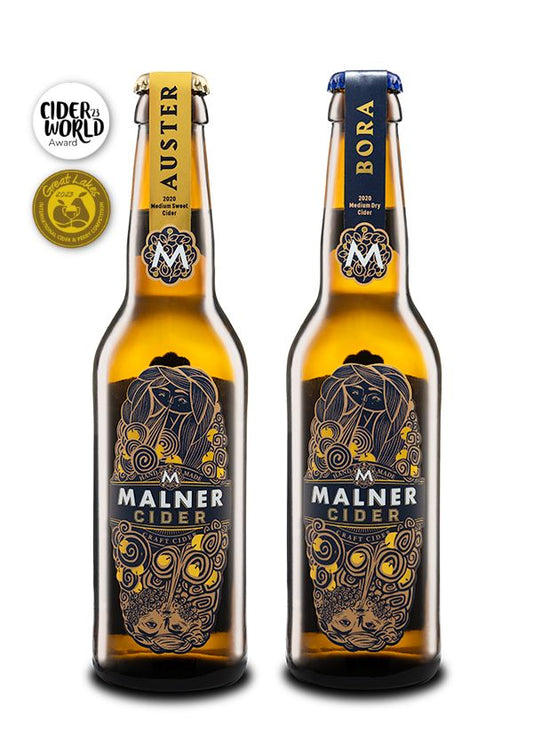Norway is a country that many would say lacks a tradition of apple cultivation and the production of apple-based products. However, they would be mistaken. Recently, we had the opportunity to attend a workshop on Norwegian ciders, their production, development, and the boom in cider-related tourism. We are fortunate that the Norwegians chose the University of Nova Gorica as a partner in their development. The collaboration between the Wine Research Centre of the University of Nova Gorica and the Norwegian partners – NIBIO Ullensvang and the Hardanger Cider Producers Association – was established back in 2015 and aimed at improving the traditional apple wines (ciders) of the Hardanger region. This later evolved into the project "Uncorking Wine & Cider Typicality: Indigenous Fermented Beverage Production for Local Cultural and Environmental Sustainability" (www.winecider.net), which successfully concluded this year.
The event was a great success, with all seats filled. The rise of Norwegian cider and tourism in Hardanger was presented by Trude Rinaldo (advisor in the Hardanger region) and Anna Gursli Langesæter (head of the Hardanger Cider Producers Association). The cider production technology was then presented by producer Ingunn Øvsthus (NIBIO Ullensvang), and the guided tasting of Norwegian ciders was led by Mats Carlehøg (Nofima). Of course, we also showcased some Slovenian cider producers (Malner cider, Rebernik Farm, and Repovž Homestead), who certainly did not leave us indifferent or disappointed.

And how did the Norwegians approach the development of cider? We must say that their story has greatly inspired us, which is why it deserves a spot on our blog. Hardanger is located in western Norway, between mountains and fjords. Despite its northern location, the region enjoys long, warm summers and cold autumns, which positively influence the characteristics of the apples. The specific climate and apple varieties grown there are such that they don’t need separate varieties for culinary use and for cider production. Since 2009, they have also had a Protected Designation of Origin for their apples and cider. Cider production used to be a hobby, deeply rooted in tradition and culture (as is also true for Slovenia), but today, it has become their new industry.
In 2014, there were only four commercial cider producers, but today, 25 producers operate in the Hardanger region. Why? First, they had to overcome a major milestone – the legal legalization of direct sales by cider producers (up to 22% vol. alcohol) to their customers, which they achieved in 2016. Equally important, in 2018, they united to form the Hardanger Cider Producers Association. This association established common goals, values, and strong collaboration between producers and cider development stakeholders, while also ensuring knowledge, skills, and quality among producers.
The association focuses on knowledge about yeast, cider vocabulary, chemistry, and sensory analysis. It includes both large and small producers who help each other with equipment, knowledge, and networking. In other words, this group of producers has closely connected with institutions that possess extensive expertise in cider development and established joint promotion of the region and its cider. In the last six years, they have achieved 100% growth. From 2018 to 2022, cider production increased from 200,000 liters to 440,000 liters annually. However, it’s not just about quantity. The ciders are also of high quality, as confirmed by sales figures. Over the last six years, they have increased sales by 8.5 million euros, meaning they went from zero to 8.5 million euros in sales in less than 15 years. This is a remarkable achievement, and we could also use the term “added value,” which primarily stems from the fact that they collaborated, invested in knowledge, and implemented joint promotion.

Ciders are bottled in wine bottles, and they produce large quantities of apple sparkling wines and ice ciders. Their ciders are of high quality, characterized by distinctive acidity and, on average, tend to be drier products. They also have slightly lower alcohol levels compared to ours. Cider has become a true "tourism product" in Norway, reflecting the identity of the place where it is made. The Norwegians also promote it in this way. As a result, villages with around 400 inhabitants are becoming real tourist attractions, featuring top-notch restaurants, a tourist boat as a sustainable means of transport to these locations (and, of course, the stunning fjord), and more. This allows them to focus not just on the quantity of cider produced but on quality. In 2021, they organized a total of 9,000 tastings, generating around 300,000 euros in revenue. This ensures a more favorable financial position for farmers and increases the interest of the younger generation in this type of activity. Currently, Norway is establishing a Fruit & Cider Center, which will be dedicated to promoting and presenting the history and research of this field to improve production and support producers.

And what can we learn? Quite a lot. Through informal conversations over a glass of good cider and homemade štruklji, the Norwegians themselves saw many parallels between the current situation in Slovenia, our tradition and history of apple wine, and their situation a few years ago. They may have an advantage because they are not a traditional wine-growing country, and cider has filled that gap, but the steps they have taken can be easily applied to our situation. Above all, they wanted to emphasize that we are small and do not promote ourselves enough, that we are not loud enough, and perhaps even that we don't value ourselves enough.
Therefore, it is essential that we start connecting, carrying out joint promotions, educating together, and building a strong community that will also become interesting to people beyond our beautiful Alps.










